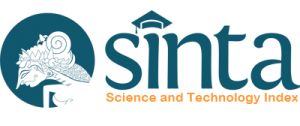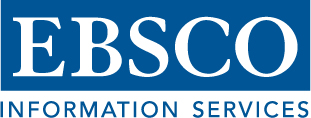The Christology Of Ho Amnos Tou Theou In The Contextualization Of Johannine Theology: Domba And Adomba In The History of Translation In Indonesia
Abstract
Full Text:
PDFReferences
Hesselgrave, David J. Communicating Christ Cross-Culturally, 2nd ed. Grand Rapids, MI: Zondervan. 1991.
______________. Paradigms in Conflict: 10 Key Questions in Christian Mission Today. Grand Rapids, MI: Kregel. 2005.
Hughes, Robert Don. “Contextualization and the Missionary Endeavor,” in John Mark Terry, Eddie Smith, and Justice Anderson, eds. Missiology. Nashville, TN: Broadman and Holman. 1998.
Kostenberger, Andreas J. John (Baker Exegetical Commentary on the New Testament). Grand Rapids, MI: Baker. 2004.
______________. A Theology of John’s Gospel and Letters. Grand Rapids, MI: Zondervan. 2009.
Kroneman, Richard. The LORD is My Shepherd. An Exploration into the Theory and Practice of Translating Biblical Metaphor. Vrije Universisteit Amsterdam dissertation. 2004.
Laney, J. Carl. Moody Gospel Commentary: John. Chicago: Moody Press. 1992.
Marshall, I. Howard. “Lamb of God,” Dictionary of Jesus and the Gospels. Downer’s Grove, IL: IVP. 1992.
Moreau, A. Scott. Contextualization in World Missions. Grand Rapids, MI: Kregel. 2012.
Morris, Leon. Apostolic Preaching of the Cross. Eerdmans: Kindle Edition. 1965.
Rae, Murry. “The Testimony of Works in the Christology of John’s Gospel,” in Richard Bauckham and Carl Mosser, eds. The Gospel of John and Christian Theology. Grand Rapids, MI: Eerdmans. 2008.
Sandy, O. Brent. “John the Baptist’s ‘Lamb of God” affirmation in its canonical and apocalyptic milieu.” JETS. Vol.34, No.4 (December, 1991), 447-459.
Sanneh, Lamin. Translating the Message: The Missionary Impact on Culture. Maryknoll, NY: Orbis. 1989; rev.2009.
Skinner, Christopher W. “Another Look at the ‘Lamb of God.’” Bibliotheca Sacra. Vol.161, No.164 (Jan-March, 2004), 89-104.
Stein, Robert H. Jesus the Messiah: A Survey of the Life of Christ. Downer’s Grove, IL: IVP. 1996.
Wead, David W. “The Johannine double meaning.” Restoration Quarterly. Vol.13, No.2 (1970), 106-120.
Whale, Peter. “The Lamb of John: Some Myths about the Vocabulary of the Johannine Literature.” Journal of Biblical Literature. Vol.106, No.2 (June, 1987), 289-295.
DOI: http://dx.doi.org/10.25278/jj.v17i2.300
viewed = 0 times



















